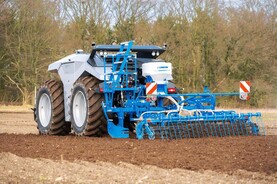Harvesting progress
Most growers were able to make good harvesting progress through the dry spell but our forecast seems a bit more broken for the next while. Crop maturity has been brought forward by the high temperatures.
Some spring barley crops were badly lodged by recent thunder showers in parts of the country.
As harvesting of winter barley moved north, growers further south have moved into oats and spring barley. The general comment is that winter barley yields improved as harvest progressed but there were a few pockets where this was not the case. Break crops, soil condition and fertility continue to be mentioned positively when reporting on good crop performance.
The relatively dry period post May during grain fill has resulted in some record high specific weighs for winter barley with quite a number of crops achieving 68-72KPH, albeit at relatively low moisture levels.
Where oaten straw is being chopped, the field should be cultivated immediately to incorporate the straw to get the biology going and weeds growing.
Grain temperature
An amount of grain was put into sheds at low moistures to keep combines going during the hot spell. While moisture levels were low on average, many samples contained some green grains which can pose a risk, especially when combined with the high grain temperature.
Even dried grain needs to be cooled post drying to help keep it safe. High temperatures can drive respiration and the release of moisture can then cause hot spots and spoilage. So it is important to blow air through grain that is hot in store, especially by night, to help bring down the temperature of the pile.
Risk management
Many growers had some winter barley and much of the crop seems to have performed well. Who knows how any other crop will perform yet, but having a number of crops helps spread the risks associated with something going wrong with any one of them.
This time last year winter barley had let a lot of people down – this year it has been a very good crop for most growers.
Last year winter wheat was very disappointing for some, but hopefully this will not be the case this year. Same for spring barley. So, regardless of how any single crop performs, it is better to have a number of crops to spread the risk.
Home-saved seed
Many farmers home save a proportion of their seed to get sowing early. The source of this seed is increasingly critical to avoid taking something unwanted from one field to others. Make sure that you have walked and rogued any areas to be used for farm-saved seed many times in recent weeks to help prevent the spread of grassweeds or any herbicide resistant broadleaved weeds.
While conditions appear to have been excellent for seed quality so far, it is still advisable to have it tested for germination. You can do that yourself if you know how or send a representative sample to the national seed testing laboratory at Backweston. Contact seedtesting@agriculture.gov.ie.






 This is a subscriber-only article
This is a subscriber-only article










SHARING OPTIONS: